Published Jan 7, 2025
Trek Through The Multiverse! Star Trek's Best Parallel Dimensions
Let's explore the history of the strange, new multiverse.
SPOILER WARNING: This article contains story details and plot points for the last two episodes of Star Trek: Lower Decks; "Fissure Quest" and "The New Next Generation."
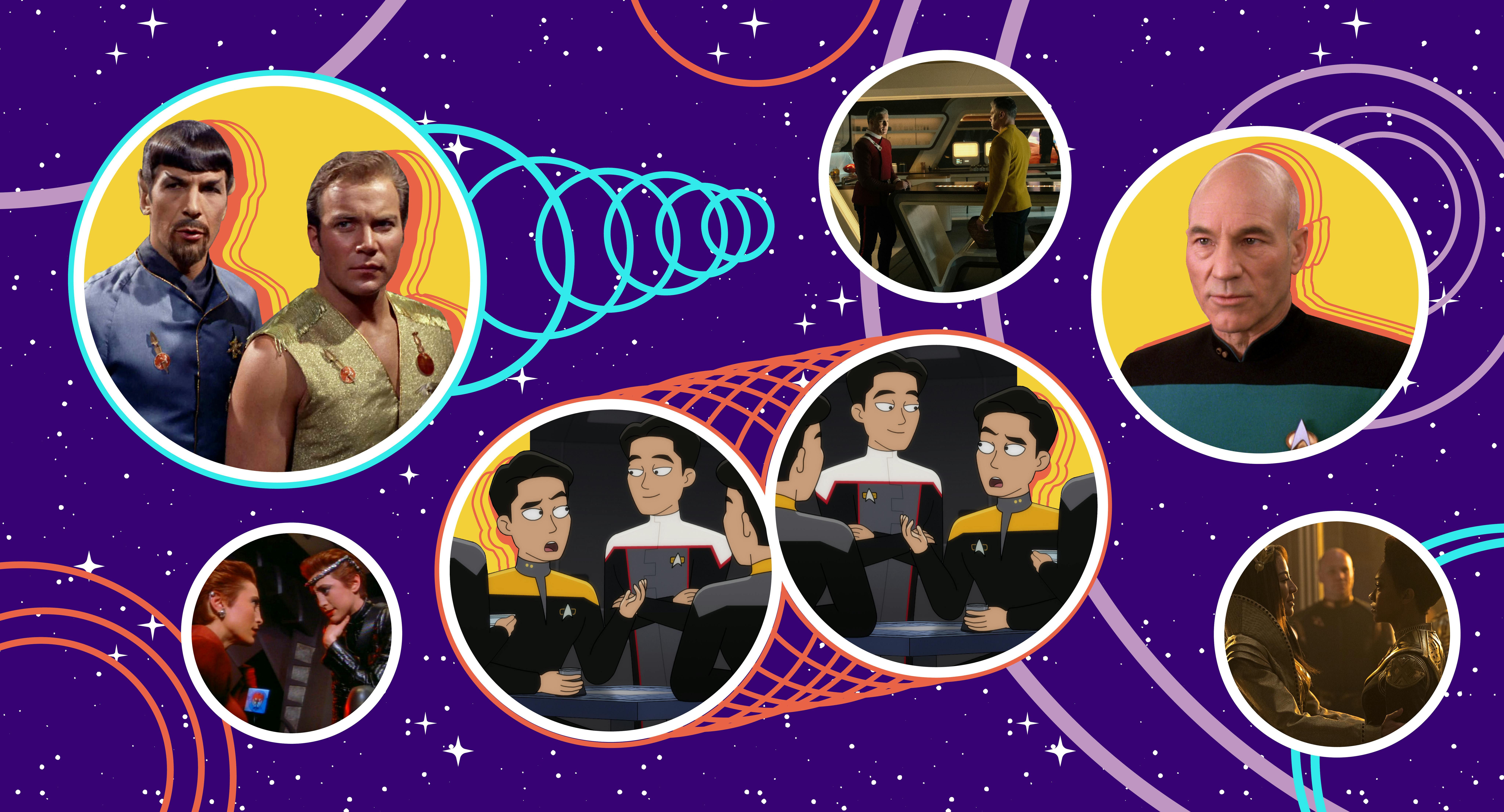
StarTrek.com
With the ending of Season 5, the Star Trek universe has set up a strange, new way to explore dimensions beyond outer space. While all of Lower Decks Season 5 has teased various alternate realities and timelines, the final two episodes — "" and "" — go the extra lightyear. Not only do we get multiple dimensions at the same time in "Fissure Quest," but in "The New Next Generation," Starfleet even sets up a permanent outpost to explore different universes.
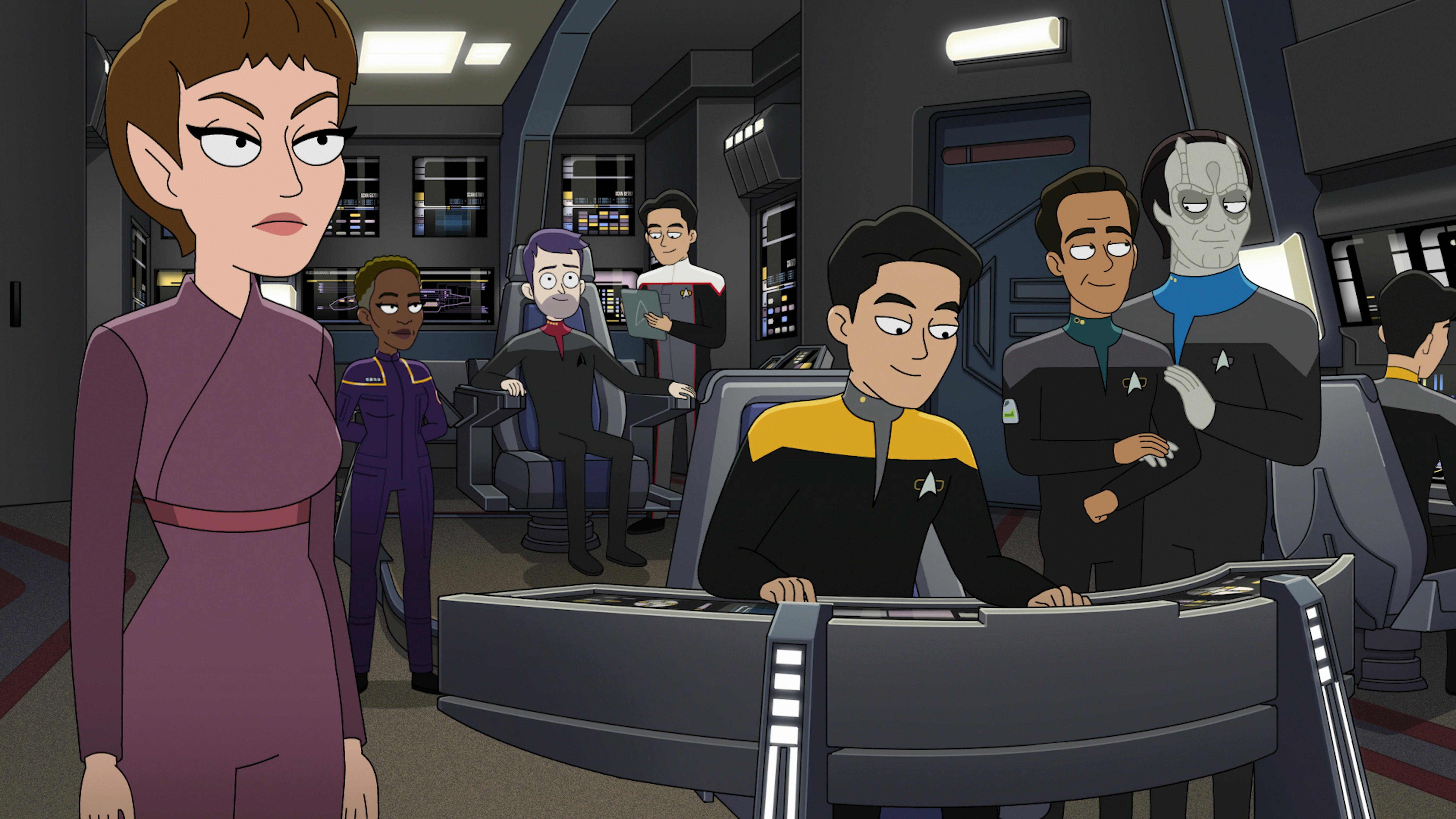
"The New Next Generation"
StarTrek.com
While the mission of Starfleet has, historically, been all about staying in just the one universe, Star Trek's larger science fiction palette has been teasing a larger multiverse well before Lower Decks Season 5.
Here's a brief primer on the history of Star Trek's best, and oddest, parallel dimensions.
Early Crossovers
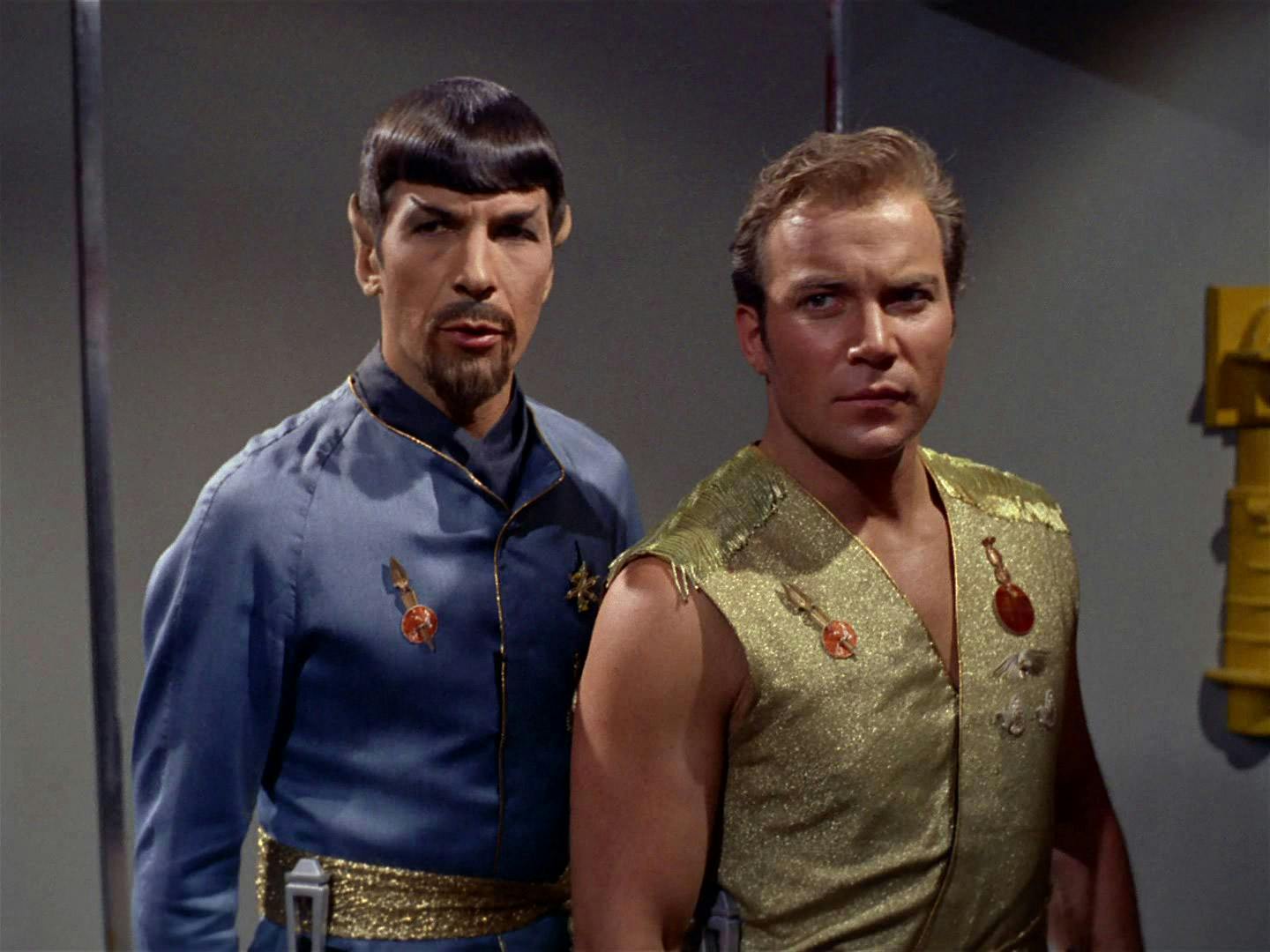
"Mirror, Mirror"
StarTrek.com
While the trope of parallel universes is very popular today, 1960s science fiction writers were hip to it, too. Every fan of will cite the famous 1967 episode "" as the most influential multiverse story in the Trek oeuvre. Written by Jerome Bixby, and based loosely on his own alternate universe story, "One Way Street," the impact that "Mirror, Mirror" had on sci-fi fans, and Star Trek is incalculable. Very often when there's talk of parallel universes in Trek, characters wonder about . Lower Decks even makes a joke about this tendency in "Fissure Quest." When one version of Harry Kim arrives on the Anaximander, he's surprised to learn there are more than two universes.
But, "Mirror, Mirror" wasn't Trek's first foray into the multiverse. In TOS Season 1, "" introduced a potentially galaxy-destroying event, caused by inter-dimensional travel. In this episode, the crew encounters a man named Lazarus, who thanks to a strange interdimensional gateway, is fighting a parallel version of himself. It may not be as memorable or as on-the-nose as "Mirror, Mirror," but the idea that cracks in the multiverse could lead to a massive problem for Starfleet started right here.
Worf Party

"Parallels"
StarTrek.com
In , alternate universes were mostly depicted through briefly glimpsed timelines. In 1990, "" showed us what the 2360s would look like if peace with the Klingons hadn't been achieved. With "," Q demonstrated to Picard a kind of dreamlike alternate universe in which he was not the captain of the Enterprise. And of course, "" dropped a timeline in which the Enterprise was destroyed in various timelines, but nearly always in the exact same way.
But, the biggest and most formative multiverse story from TNG is easily the Season 7 episode "." Here, Worf shifts between various realities, which, at first, seem only vaguely different from our cozy, "normal" timeline. But, by the end of the episode, a rupture causes a nearly infinite number of Enterprises to exist in the same area of space. This image, of various Enterprises, some more worse-for-wear than others, created the foundation for the Trek multiverse we think of today. We didn't see the purple Enterprise from the Lower Decks episode "," but we're sure it was there somewhere.
Through the Looking Glass, Strangely
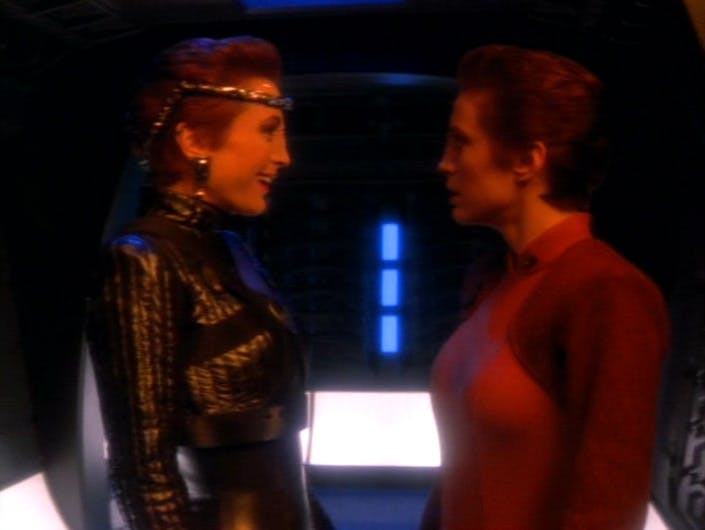
"Crossover"
StarTrek.com
By the time of , the Mirror Universe was back in a big way. Starting with the 1994 episode "," DS9 made the wicked, dark Trek timeline a permanent part of the franchise in a way that TOS had only hinted at. In total, DS9 dealt with the Mirror Universe in five separate episodes, which created a precedent for the series to later do a two-parter episode set entirely in the Mirror Universe; "."
But again, in the era of DS9, , and Enterprise, some of the more interesting parallel universes in Trek occurred outside of the Mirror Universe. Voyager famously gave us the "," an entire epic episode specifically about the creation of various parallel universes. Voyager also had the multiverse built into its own resolution; the plot of its series finale, "" relied on an alternate version of Janeway traveling across time and dimensions to save all of history.
Permanently Parallel
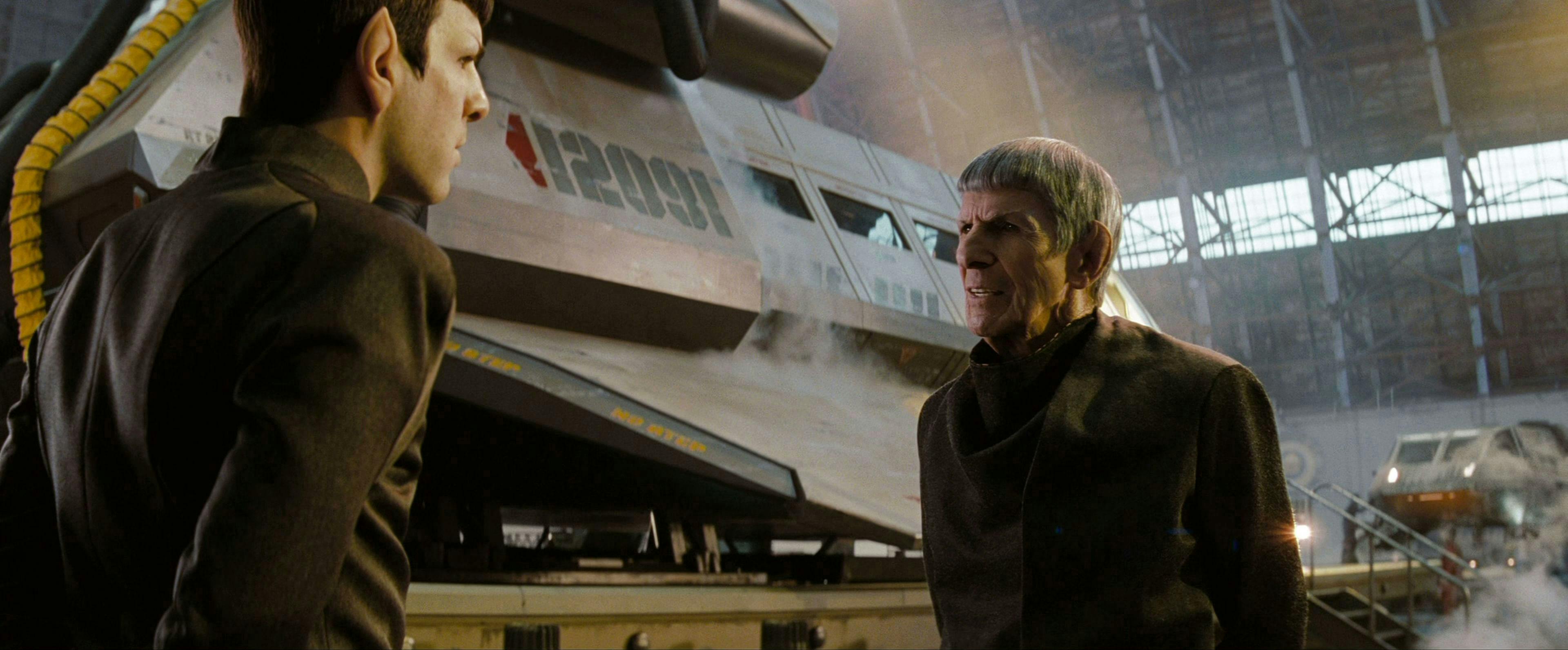
Star Trek (2009)
StarTrek.com
Perhaps the most interesting use of a parallel timeline in all of Trek canon can be found in the three Kelvin Universe movies; , (2013), and (2016). In these films, it's made very clear that nearly all the present-tense action occurs in a divergent parallel timeline, implicitly different from that of The Original Series or the rest of the "Prime Canon."
Cleverly, the first 2009 "reboot" Trek movie also asserted the fact that this universe only existed because of time travel from the original universe. But, instead of having Prime Universe Spock return to his own dimension at the end of the movie, these Trek movies suggested that sometimes, the best way to find peace is to remain in the new parallel dimension. After all, the Kelvin Universe and Mirror Universes don't consider themselves to be "alternate." For the people who live in those universes, it's simply home.
The New Multiverse Normal

"Vaulting Ambition"
StarTrek.com
When the Trek franchise relaunched on TV in 2017 with , the multiverse was crucial to the basic storyline. Although kept a secret halfway through Discovery Season 1, Captain Lorca's machinations are all connected to a desire to return to the Mirror Universe. This journey created several super-important plot revelations, including, and perhaps most importantly, the movement of Emperor Philippa Georgiou from the Mirror Universe to the Prime Universe. Michelle Yeoh's upcoming movie couldn't exist without this multiverse action, and the current world of Trek would be far less rich without the multiverse.
All the newer TV series have explored the multiverse in one way or another. Season 2 introduced a new parallel universe in which the Federation had been replaced by the Confederation in the future. Meanwhile, the finale of Season 1, "," introduced a parallel timeline in which Pike never stopped being the captain of the classic U.S.S. Enterprise, leading a disastrous, and very different encounter with the Romulans. Even crossed the multiverse in Season 2, in an epic quest to restore its own timeline.
What the final two episodes of Lower Decks have done for Trek then, is to codify what's been happening all along. Starfleet has always been, as Boimler says, poised to "explore strange new realities." What Lower Decks is just made that Starfleet side quest an official mission of Starfleet. The voyage of the U.S.S. Cerritos through the multiverse may be over. But, as all Trek fans know, the human adventure is just beginning, in a myriad of different universes.





